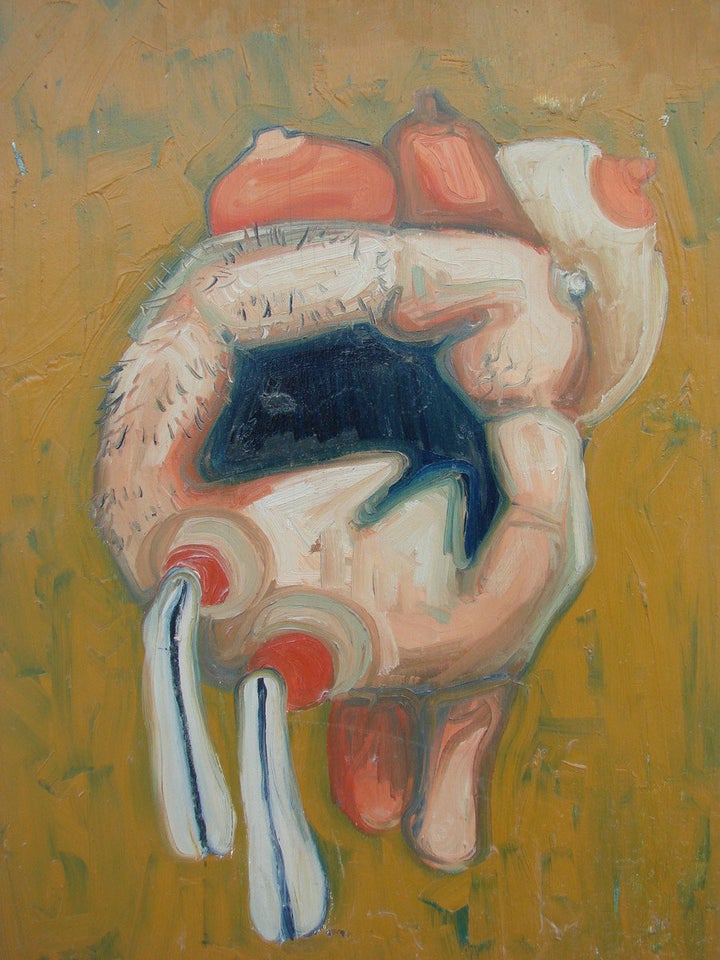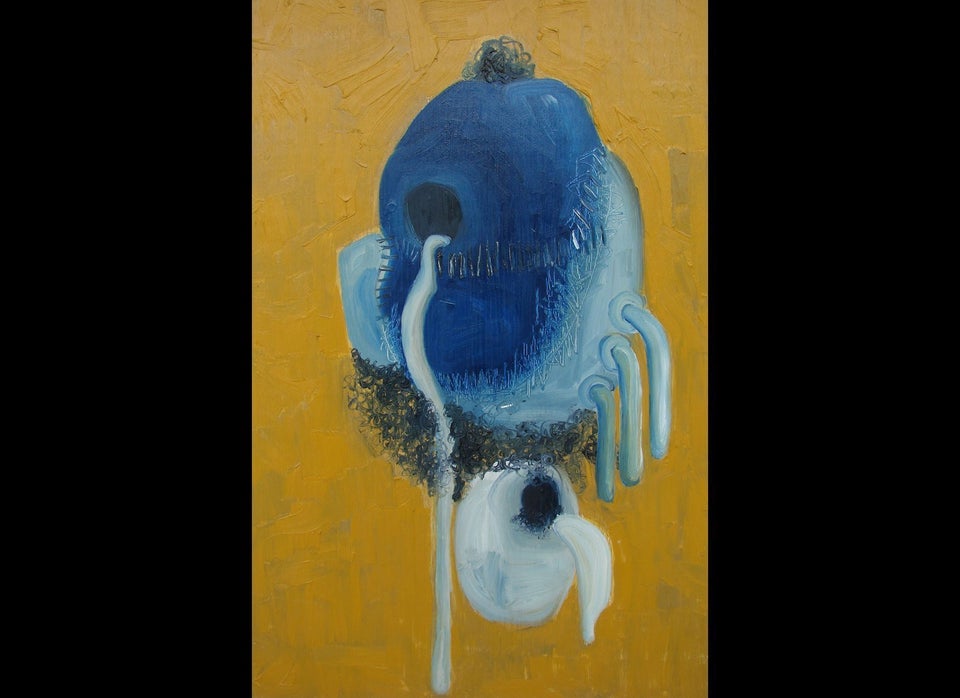
WASHINGTON -- Pictures of sensuously ingrown arm hair are coming to the DC Arts Center.
Local artist Stephanie Williams' first solo show, "Emerging from the Curious: Common Place Anomalies," features drawings, paintings and sculpture sensuously representing the natural world -- both what Williams knows of it and the myths she makes up to fill in the gaps. Some of these depictions involve He-Man and Barbie. Some involve Williams' Roman Catholic upbringing.
What gaps? Which myths? Why He-Man and Barbie? HuffPost DC caught up with Williams to find out more about the upcoming exhibition.
HuffPost DC: What are "common place anomalies"? What does that phrase mean?
Stephanie Williams: My work is very much about the odd stories that people often tell themselves in order to understand the world around them -- accurate or not. For example, "Skin Patch" is a piece that pays homage to all the missing skin detail of the toys I grew up playing with. I would wonder I have arm hair, He-Man does not. My nose has pores where Barbie does not, etc. I feel that's where rich mythology comes from -- one person's interpretation of a reality. Or sometimes, and more interestingly, intentionally seeing things inaccurately.
I often take stories that I hear from friends, stories about my misunderstandings from childhood, etc and turn them into these amalgams with hair, appendages, crevices, etc. Because these "anomalies" are inspired by misunderstandings from the everyday I feel it's important to place an emphasis on the commonality of the occurrence.
HuffPost DC: It seems like you're really inspired by human organs. Is that right? If so, what do you find compelling about them?
Williams: Not just organs but by bodies. Maybe this has something to do with growing up in a Roman Catholic household, where the implications of body are some deeply ingrained. Catholicism is all about the body; body and blood, stigmata, hair shirts, fasting.
When doing research I found letters of saints describing their enlightenment through sensuality, and bodily consequence. It only seemed appropriate to look to visceral things. If you sit and really think about your experience in your own body, it can actually be kind of disgusting, seemingly silly because we all digest, excrete, flake, consume, etc. The things I'm trying to figure out and give portraiture too end up quite literally have flesh and ingrown hairs.
HuffPost DC: You fill in your knowledge about nature with myths that you make up. Can you tell me about some of those myths? How do they play out in your artwork?
Williams: The wax slides (wax mount on glass) idea started by hearing one of my friends describe floaters (in the eye). When they were little they would look up to the sky and see these seemingly autonomous beings crawling around on the surface of eye. The anomaly paintings are illustrations of different close-up views of the body and creating a characters from that view be it a hairy knee or knuckle, a close inspection of the tongue, underneath a nail-bed, etc. "Inert Space" is a painting about how bacteria was once explained to me when I was little and I imagined a whole city of beings living inside my bellybutton.
DC Arts Center (2438 18th St. NW) hosts the opening reception for "Emerging from the Curious: Common Place Anomalies" on Feb. 10 from 7-9 p.m. The show runs until March 18.

